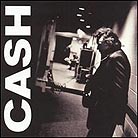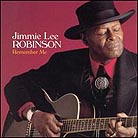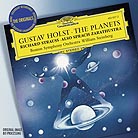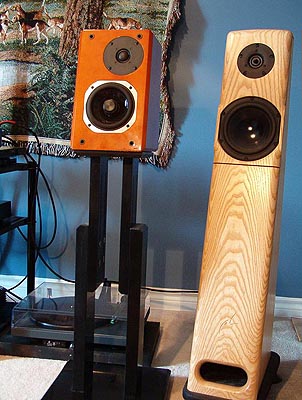 |
|||||||||||||||
| I found the Dulcet's sonic characteristics consistent regardless of what amplifier I used. However, the best match was the Stingray. I suspect the Dulcet would continue to impress with far more upscale and powerful gear than what I had on hand. My favored listening position was on the long wall, with speakers and listening position six to seven feet apart. I bi-wired with a double run of JPS Ultraconductor and also used a single run of DH Labs Q-10 with the stock Cardas or my custom T-14 jumpers. Overall, I preferred the latter. I initially played a mono track, first through each speaker separately and then together, to ensure that there were no internal wiring problems or driver issues. Both loudspeakers appeared to be impeccably matched. "Fast, agile, lively, vivid, coherent, holographic and expressive" were words that frequently appeared in my notes during my time with the Dulcets. They cast a wide, well-layered, musically coherent soundstage that projected into my room while the little boxes all but aurally disappeared. Imaging was rock solid and individual instruments and voices did not stretch or wander across the soundstage as they so often do with higher-order crossovers. I was quite taken aback with the Dulcet's sheer presence, brio and lightning-fast response. These are involving little guys and definitely not for the laid-back crowd! The Dulcets downright demanded my attention. Timing was spot on and captured the tiniest shift of tempo and dynamics with ease. |
|||||||||||||||
| While they were not as full and rich sounding in the midrange as larger loudspeakers, the Dulcets delivered great articulation and transparency, with oodles of transient speed and punch. They only became a trifle overzealous when driven too hard. Bass was surprisingly full yet punchy and well delineated, with little in the way of overhang. I do not believe that I have ever heard a double bass sound as tactile and as well rendered in a loudspeaker at this price and size. |
|||||||||||||||
 |
|||||||||||||||
| Where the Dulcets really score is in their ability to succeed where many far more expensive products have failed for me: The elusive ability to communicate the musical message and emotionally engage the listener. This was perfectly realized via m.a. recording's fine nouveau tango recording, Sera Una Noche [M052A]. The Dulcets reveled in | |||||||||||||||
 |
|||||||||||||||
| this veritable smorgasbord of acoustic instruments with stunning clarity and immediacy that was breathtaking. Each individual tap and whack on the tabla or pluck of a guitar string was vivid and tactile. I was able to focus on each individual strand in this delicious recording with ease, and there was no trace of the clinical sterility that seems to plague so many loudspeakers. The Dulcets were definitely in the service of the music and not the other way around. |
|||||||||||||||
These cute little canucks unraveled every little thread of The Harp Consort's delectable exploration of 16th century Spanish romances and French chansons [Harmonia Mundi HMU 907316]. Every note from harp, citern, viola de gamba, organ, guitar, harpsichord and psaltery was clear and distinctly allied to relaxed ease and a natural flow while the ambience of the church venue was audible yet completely integrated with the performers. With other loudspeakers, this information tends to get obscured. It was smaller-scale, well-engineered exotic recordings such as this and the m.a. disc noted above that really underscored how capable the Dulcets truly were. |
|||||||||||||||
 |
|||||||||||||||
| The treble was clean, extended and sweet, yet free from grain and hardness unless pushed hard. More importantly, the higher frequencies were well integrated and not separated from the rest of the spectrum by being unnaturally highlighted as seems the case with many modern loudspeakers. At first blush, such designs may impress with their upper-end detail and air but after some time -- usually after you have bought them -- the honeymoon comes to a crashing end and that so-called air and detail becomes as painful as an ice pick through the skull. Incidentally, HE2004 and Le Festival Son & Image were littered with such speakers. No doubt the Dulcet lacks the last drop of extension and refinement of its larger, more expensive brethren but at this price, I certainly had zero complaints. |
|||||||||||||||
In the all-important midrange, the Dulcets were suitably well organized and coherent, offering excellent retrieval of minute musical information such as Johnny Cash's weathered and world-weary vocals on his captivating cover of Nick Cave's deathrow ditty, "The Mercy Seat' [American CK 69691] or the sound of Jimmie Lee Robinson's foot stomps and jangling spurs that accompany his traversal of various Blues and Folk tunes [Analogue Productions APO 2006]. A special treat was the degree of feel and sheer presence of his vocal gymnastics on "Boll Weevil". It sent shivers up my spine, an effect that occurs all too rarely. On other similar sized and priced loudspeakers, both Cash's and Robinson's vocals have tended to sound hollow or even nasal. On the Dulcets, both veterans' rich burnished voices were well rendered and |
|||||||||||||||
 |
|||||||||||||||
| possessed an almost eerie palpability. I could sense the burden of trials and tribulations which both men so obviously had experienced. Granted, this is all highly subjective stuff but these are the sorts of traits I look for in a component. If an audio product can offer that level of musical communication, then it is indeed special. |
|||||||||||||||
 |
The Dulcets were quite able to communicate the scale and scope of large-scale orchestral works; however, they did compress somewhat on massive peaks and were limited in their ability to deliver the sheer weight of an orchestra in flight. In William Steinberg's warm and surprisingly lyrical reading of Strauss's Also Sprach Zarathustra [DG 463 627-2], I was conscious of the lack of power and weight in the opening movement and in other climaxes. Nevertheless, the Dulcets went farther in the Sturm & Drang department than any similarly sized speaker I have heard to date. In a small room with closer wall |  |
|||||||||||||
| placement, you might not even notice. If you demand more heft and brawn, a bigger box would be required or you could mate the Dulcet to a decent subwoofer. But then you would probably lose that wonderful coherency. |
|||||||||||||||
| How did the Dulcets compare to my Meadowlark Kestrel 2s? The Ref 3As threw a huge, well-defined soundstage and exhibited excellent imaging and depth. They also managed to aurally vanish without a trace. So do the Kestrels, which is generally unusual among floorstanders and no doubt due to their time-aligned drivers and 1st order crossovers. The Dulcets' dynamics and bass extension was surprisingly good, however, they could not reach down quite as deep as the Kestrels nor could they play as loud. The tiny Canadians displayed a more detailed, forward and in-the-room presentation that never failed to invigorate. The Kestrels laid out the soundstage behind the plane of the speakers where detail was rendered with greater subtlety. Keep in mind, one is not right and the other wrong. It is simply a matter of personal preference. Some folks hanker for a more distant perspective; others lust after a more upfront balance. The Dulcets did not quite have the same sense of ease the Kestrels exhibit. I presume this is the price one pays for a more tactile and expressive delivery. If you want ease, you might need a bigger box. In direct comparison with the Kestrels, the Dulcet delivered an overall leaner balance but hid it extremely well with what I believe to be a carefully implemented minor emphasis in the lower midrange. As I mentioned above, the wee Ref 3As did a decent job on big orchestral works but could only move so much air. They did not fare as well as the Kestrels in conveying the authority, grandeur and sweep of heavy hitters like Bruckner, Mahler or Wagner. Of course, the Kestrels face exactly the same challenge when compared to their larger brothers - so don't read too much into this. |
|||||||||||||||
 |
|||||||||||||||
Overall, this mini-monitor was a source of considerable surprise. It was difficult to believe that something so small could sound so big, weighty and powerful. While it did not plumb the depths to organ pedal thunder, the Dulcet was so cleverly balanced and full sounding, it gave the illusion of deeper bass than it actually had. What bottom end it did have was quick, clean and incisive. The Reference 3A Dulcet was an awesome musical communicator and offered terrific overall coherence and immediacy that made for many captivating listening sessions. It was also fast on its feet and possessed a lightning-quick response that I am sure would have you rolling up your rugs for a full-on boogie session. Best suited to small rooms and those listeners who are content with modest volume levels, the Dulcet can get a little shouty and congested when cranked up. Why anybody would want to abuse such a cute little speaker as the Dulcet is beyond me. In conclusion, Reference 3A has succeeded in their mission statement for this big little music communicator. Even if you're willing to spend more, the Dulcets should go on your short list if you are looking for a pair of attractive mini- monitors well under $2,000/pr. |
|||||||||||||||
 |
|||||||||||||||
 |
|||||||||||||||
|
Manufacturer's website
|
|||||||||||||||
 |
|||||||||||||||